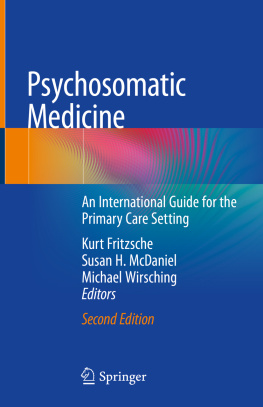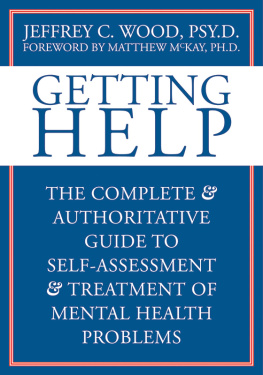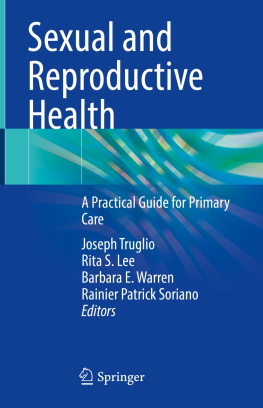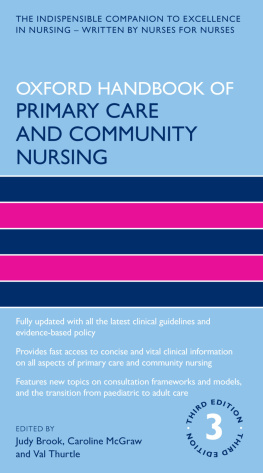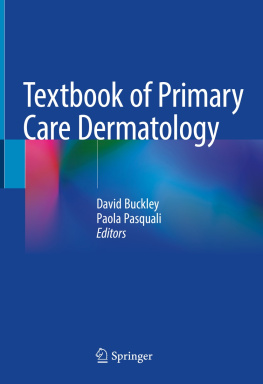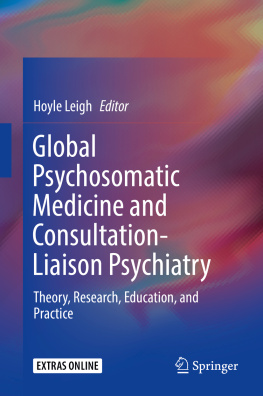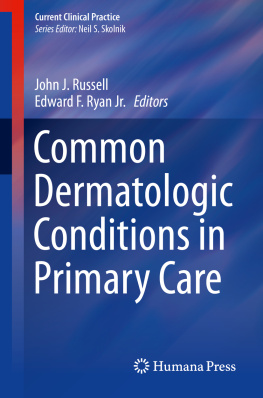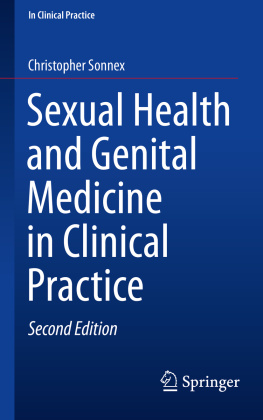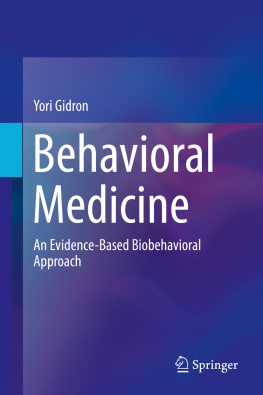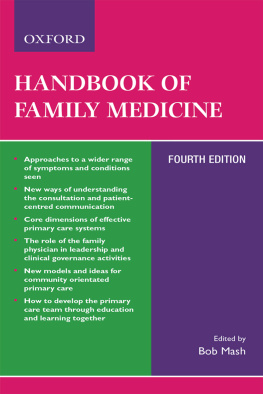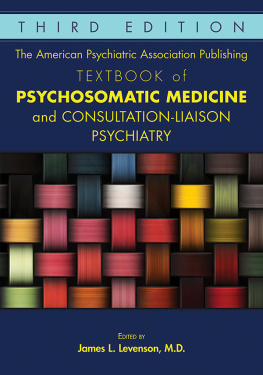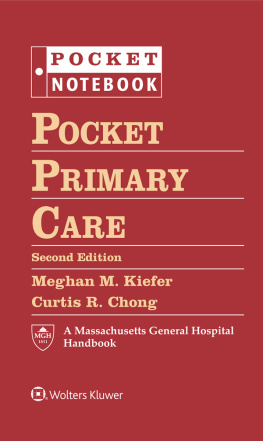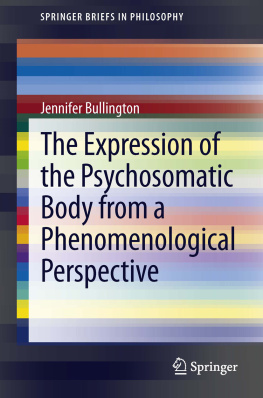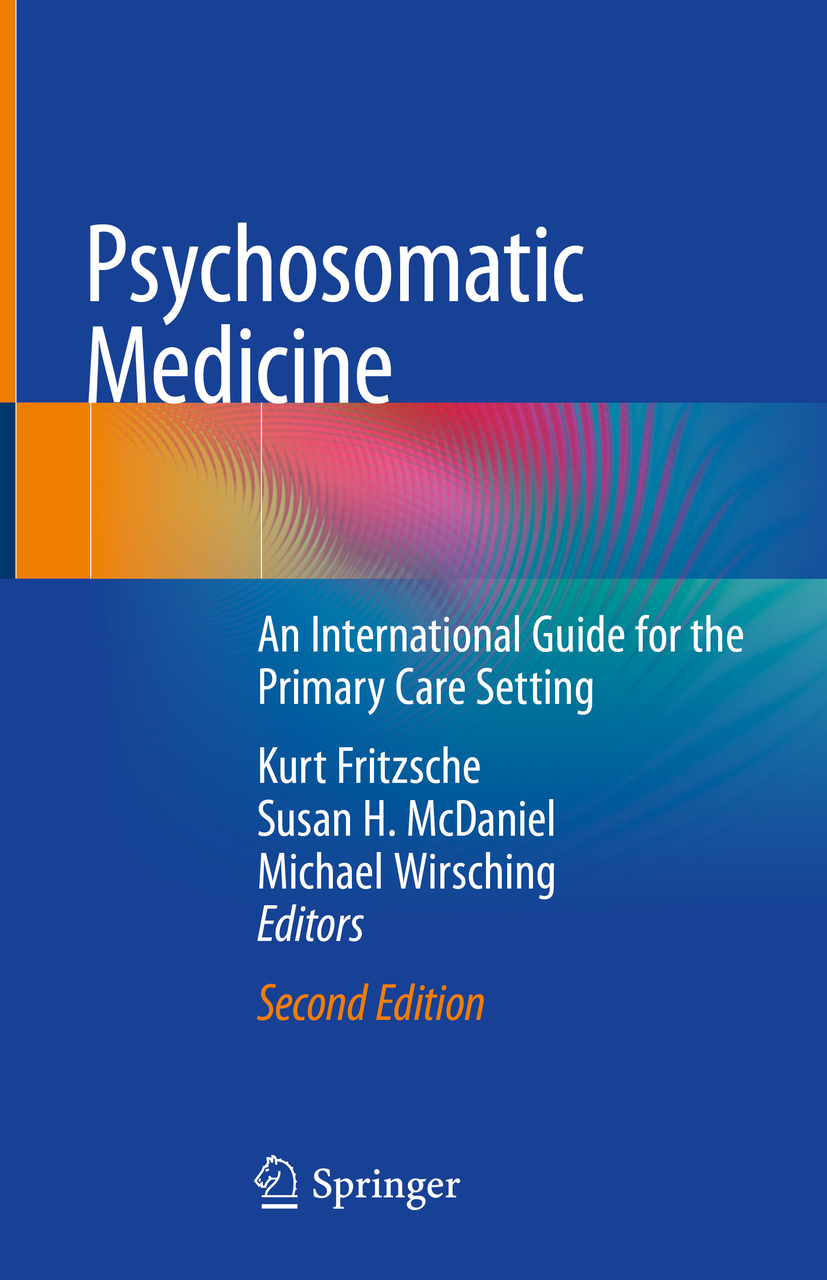Editors
Kurt Fritzsche MD
Department of Psychosomatic Medicine and Psychotherapy, Center for Mental Health, Medical Center - University of Freiburg Faculty of Medicine, University of Freiburg, Freiburg, Germany
Susan H. McDaniel PhD
Department of Family Medicine, University of Rochester Medical Center, Rochester, NY, USA
Michael Wirsching MD
Department of Psychosomatic Medicine and Psychotherapy, Center for Mental Health, Medical Center - University of Freiburg Faculty of Medicine, University of Freiburg, Freiburg, Germany
ISBN 978-3-030-27079-7 e-ISBN 978-3-030-27080-3
https://doi.org/10.1007/978-3-030-27080-3
Springer Nature Switzerland AG 2020
This work is subject to copyright. All rights are reserved by the Publisher, whether the whole or part of the material is concerned, specifically the rights of translation, reprinting, reuse of illustrations, recitation, broadcasting, reproduction on microfilms or in any other physical way, and transmission or information storage and retrieval, electronic adaptation, computer software, or by similar or dissimilar methodology now known or hereafter developed.
The use of general descriptive names, registered names, trademarks, service marks, etc. in this publication does not imply, even in the absence of a specific statement, that such names are exempt from the relevant protective laws and regulations and therefore free for general use.
The publisher, the authors, and the editors are safe to assume that the advice and information in this book are believed to be true and accurate at the date of publication. Neither the publisher nor the authors or the editors give a warranty, expressed or implied, with respect to the material contained herein or for any errors or omissions that may have been made. The publisher remains neutral with regard to jurisdictional claims in published maps and institutional affiliations.
This Springer imprint is published by the registered company Springer Nature Switzerland AG
The registered company address is: Gewerbestrasse 11, 6330 Cham, Switzerland
Preface to the 1st Edition
In 1978, representatives from 134 countries convened in Alma Ata, calling for health care for all by the year 2000. (Declaration of Alma-Ata1978) This was a turning point for global mental health care, as this declaration emphasized the importance of health care near peoples homes, health promotion and disease prevention services alongside curative medical service delivery, and mental health as an integral component of health. Thirty years later, Barbara Starfield elucidated the evidence to prove that countries with the best morbidity and mortality figures and overall health were linked to health care systems based on a strong foundation of primary care (Starfield et al. 2005).
In 2007, theLancetpublished a series on global mental health, which identified the gaps in mental health care services, particularly in low and moderate income countries. Key works in thisLancetseries (Movement for Global Mental Health 2007), followed by the movement for global health launched on the 2009 World Mental Health Day, provided the momentum and backing to work toward mental health care for all (World Federation for Mental Health 2009). WHO and the World Federation for Mental Health have now joined forces to advocate for policies and practices to reduce stigma and integrate mental health into primary care systems.
In 2008, the World Health Organization (WHO) and the World Organization of Family Doctors (Wonca) published a report that delineates the need, describes best practices, and identifies 10 common principles for successful integration of mental health care into primary care (WHO and Wonca 2008). This document, along with the works of Patel, Schirmer and colleagues provides tools, strategies, and best practices for mental health and behavioral health integration into primary care in low and moderate income countries (Patel 2003; Schirmer and Montegut et al. 2010).
Since 2001, the Department of Psychosomatic Medicine and Psychotherapy of the University Medical Center, Freiburg, Germany, maintains exchanges with the Asian countries China, Vietnam, and Laos, with Iran, with African countries such as Sudan and Uganda, as well as with colleagues in other European countries and the USA and Australia. Ongoing classes in Psychosomatic Medicine and psychotherapy are held especially in Asian countries and Iran. In their feedback, hundreds of doctors, from young professionals to highly experienced doctors, reported to have benefitted tremendously from the courses both professionally and in their personal relationship with patients. The experiences we gained in these last 10 years with respect to the content, and pedagogical and methodological design of the courses are included in this book.
This book was written for curious doctors who wish to gain and develop knowledge and skills in Psychosomatic Medicine. The main question is therefore: How can I learn Psychosomatic Basic Care? Psychosomatic Medicine is a multidisciplinary subject involving extensive knowledge. It is not possible to treat all clinical manifestations in one class and in this textbook. Therefore, basic ways of thinking and approaches in the most common diseases are presented. The book is organized according to the three objectives of basic psychosomatic care:
Recognizing psychological and psychosomatic conditions and disorders
Limited personal consulting and treatment services
If necessary, targeted referral to and cooperation with mental health specialists.
The book is divided into a general part and a part with specific clinical manifestations. The general part addresses topics that are relevant to all clinical manifestations such as the interaction between mind and body, doctorpatient relationship, doctor patient communication, the family interview, and the Balint group. The second part addresses specific clinical manifestations that are most frequently encountered in primary care, including depressive disorders, anxiety disorders, somatoform disorders, posttraumatic stress disorder, alcohol dependency, and psychosomatics of life threatening diseases such as cancer and coronary heart disease.
Each chapter is divided into diagnostics, treatment, and pitfalls. In each chapter, typical case studies are used to demonstrate the diagnostic and therapeutic steps. As a result, the book has a high practical relevance, and can also be used directly as a course book in training in Psychosomatic Basic Care.
References
Declaration of Alma-Ata. International conference on primary health care, Alma-Ata USSR, 1978. http://www.who.int/hpr/NPH/docs/declaration_almaata.pdf . Accessed 22 June 2012.
Movement for Global Mental Health.Lancet serieson global mental health. 2007. http://www.globalmentalhealth.org .
Patel V. Where there is no psychiatrist: a mental health manual. London: Gaskell; 2003.

